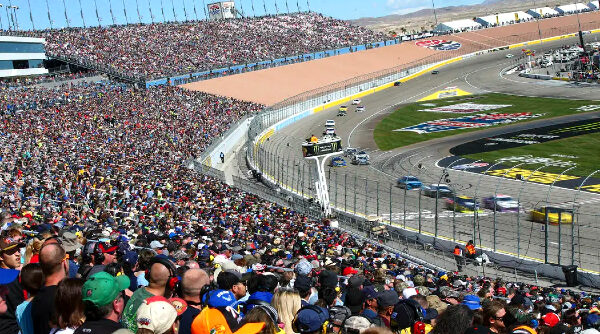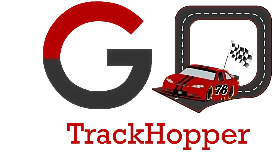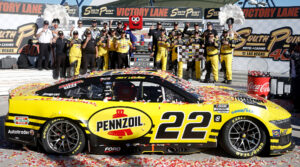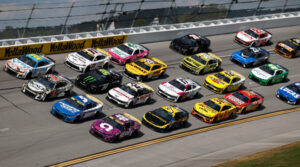NASCAR Fans Should Learn the Rules

As we sift through the countless comments and disputes piling up our social media platforms in recent weeks, it’s become clear that NASCAR fans might find themselves in far fewer heated arguments if they took the time to actually familiarize themselves with the sport’s rules. The sheer number of misinformed posts is concerning, especially when the comments and discussions devolve into insults and baseless claims.
In an effort to promote clarity, we’ve decided to tackle just a few of the recent hot topics. By shedding light on the rules governing the issues, we hope to steer these online discussions towards informed interactions. So, let’s set aside the vitriol and dive into the facts. (Fan quotes included here are verbatim.)
MEDIA
Up first are fans who think drivers do not have to speak with media. These comments have included: “The media is only their to stir the pot so drivers should refuse talkin to them,” and “You know people, drivers dosen’t even have to say anything to the media, theyre not lawyers.”
WRONG
While it’s true that media are not lawyers, it is not true that drivers can refuse talking to them. In fact, drivers are contractually obligated to engage with properly accredited media. Thus, Kyle Busch’s infamous quote, “I’m only here so I don’t get fined.” This obligation extends to scheduled interviews, post-race questions on pit road, and designated media sessions held pre and post-qualifying on race weekends. The sessions, known as ‘bullpen,’ involve the top 30 drivers in points and, during the playoffs, are limited to playoff drivers. Drivers are escorted into the media center by their personal PR representatives and are expected to cooperate with the reporters that opt to question them. Their PR reps monitor the duration to ensure that their respective drivers remain on schedule for other commitments. While there are exceptions for emergencies or conflicting schedules, the expectation remains clear: drivers must interact with the media as part of their professional responsibilities.
The media do not aim to stir the pot, but rather strive to uncover the facts or mindsets behind incidents that occur on the racetrack. By seeking out the drivers’ perspectives, they aim to provide clarity to fans and put an end to speculation. Without the media, race events would lack the compelling storylines and insights that captivate fans.
PASSTHROUGH PENALTIES
Several fans have commented recently that teams should service their cars during pass through penalties, rather than wasting time by returning to pit road at some point later on. Comments have included: “it’s a pass thru penalty on lap 2, they should just top him off with fuel and let him unleash a can of whoop ass.”
SURVEY SAYS WRONG
Pass through penalties are “penalties,” not pit stops. The purpose is for the driver to lose position on the track, essentially as a punishment for breaking a rule, either by the driver or their team. Therefore, allowing the team to use the penalty to improve the car is counterproductive. If it is necessary for a team to service the car under penalty, such as for a flat tire, further penalties are assigned.
JUMPED STARTS
Next up is the issue of Denny Hamlin’s jumped start during the night race at Richmond. Despite that the incident is weeks old, comments continue to stack up on our social media, including many that incorrectly claim Martin Truex Jr. was the leader, plus: “The control car can go as soon as the pace car leaves the track” and “It’s up to the rest of the field to keep up with the leader.”
WRONG and WRONG
When the pace car leaves the track, ALL cars must maintain pace speed. The leader then dictates the start at any point “within the restart zone”. This area is clearly marked on the track. Increasing speed prior to reaching the line of the zone is classified as “jumping the start” and usually results in a black flag and a pass-through penalty for the offending driver while the remainder of the field continues racing.
For those of you who are still arguing over whether Hamlin did or didn’t, NASCAR has since stated that Hamlin “rolled early.” The issue was addressed the day after the race by NASCAR’s VP of Competition, Elton Sawyer. He revealed that NASCAR had spent the day examining SMT data, camera angles and in-car footage, and indeed found Hamlin at fault. He further issued a stern warning to drivers that NASCAR does not want to see this happen again.
WEATHER
The 2024 NASCAR season has encountered its fair share of challenges, with the threat of rain disrupting race weekends. As soon as the forecast hints at the potential for a wet weekend, a chorus of recommendations floods social media. These suggestions have included, “If they were smart they would just move the race now.” “If we already know its gonna rain why aren’t they movin it?” and “Just move it to Saturday it’s easy enough to do!”
QUITE WRONG
It might sound easy to do, but it’s not. Suggestions such as these overlook many crucial factors. Firstly, weather forecasts can be notoriously unpredictable, often changing overnight. Many times, races have proceeded as planned, with only minor delays for track drying. As for Talladega this past weekend, the rain stopped early in the morning, and it turned into a sunny day. Imagine, for a second, if NASCAR had jumped the gun based on the suggestions of fans, and those grandstands full of ticket holders and infield full of campers had missed the race. Imagine the overwhelming backlash and what the financial implications would have been, for the fans and their travel expenses, and for NASCAR having to issue refunds.
Second, there’s a misconception that NASCAR has control over the broadcast schedule. They do not! Broadcasting channels own the rights to the broadcast and cannot simply change the scheduled time at will. While channels may work with NASCAR to adjust broadcast times in the event of impending weather, significant changes are rare. The exception, such as the rescheduling of The Clash at the LA Coliseum in February, typically involves extreme circumstances like a state of emergency, as it did that weekend. Moreover, Saturday is already packed with behind-the-scenes events crucial to race preparation, including sponsor and team engagements, scheduled interviews, driver appearances, qualifying, and practice sessions. Not to mention the Xfinity race. Whether Xfinity runs at the same track or not, they always run on Saturdays. This is done on purpose so the race does not compete with the Cup Series for air time. All of this and more is why NASCAR tradition holds a race over until Monday, when inclement weather cancels the event on a Sunday.
Yet, despite these complexities, some of which should be obvious, or at least common sense, social media remains rife with calls to ‘move the race.’ This demonstrates a huge disconnect between fan expectations and logistical realities.
WET WEATHER TIRES
Another misconception prevalent among fans is the belief that when it rains, NASCAR can simply equip cars with rain tires and wipers and let them race. Comments recently have included, “What have they got rain tires for if thir not gonna use em?” and “No need to delay the race, just use the dam rain tirs.”
VERY WRONG
The reality is far more nuanced. Firstly, NASCAR doesn’t use “rain tires” but rather “wet weather” tires, designed for damp or semi-wet track conditions rather than full-on rain. These tires enable racing in light precipitation or on partially wet tracks but are not suitable for heavy rain. Moreover, while some tracks on the NASCAR circuit, like road courses or those with less banking, can accommodate wet weather racing to an extent, it’s virtually impossible for races to proceed under such conditions at banked tracks or super speedways. The high speeds, reaching approximately 200 mph, combined with steep banking angles of 31 to 33 degrees, make racing in wet conditions unsafe and impractical.
Despite NASCAR’s efforts to educate fans on the challenges of racing in the rain, including repeatedly showcasing footage of an air dryer truck struggling and sliding on the embankment at Talladega during track drying, some fans persist in calling for races to proceed regardless.
OVERTIME CAUTION FLAGS
Social media comments regarding overtime caution flags are far too numerous to showcase. But suffice to say, there is an alarming number of fans who believe that NASCAR will repeatedly throw unnecessary cautions until their favorite driver wins. This type of feedback was particularly pervasive after Denny Hamlin’s win at Richmond, and again after Chase Elliott’s win in Texas, with an overwhelming number of race fans believing the caution flags were only to help them win.
JUST WRONG
This flawed logic conveniently overlooks that the yellow flags were for the highly visible incidents that took place on track. In the case of Hamlin’s win, the caution flag was for a wreck that involved Bubba Wallace and Kyle Larson. In Elliott’s case, there were single car spins. On a restart with two laps to go in regulation time, Elliott and Hamlin were battling side-by-side for the lead when Hamlin got loose and spun up the track and into the wall, putting the race into a two-lap overtime shootout. On the restart, Trackhouse’s Ross Chastain started alongside Elliott but couldn’t pass him before another caution waved for Harrison Burton. This forced yet another restart. Elliott got the lead on every restart, so if NASCAR truly had been trying to help him, wouldn’t it have made more sense to just let him run instead of throwing cautions and causing him to use up tires and waste fuel? Crew chief Allan Guftason had already come on the radio and informed Elliott that he only had enough for one more restart. So how were caution flags helpful? The answer is – they weren’t. They actually hindered him. So these types of uninformed comments denote widespread conspiracy theories rather than a stable understanding of the sport.
CONCLUSION:
In the realm of NASCAR fandom, it often seems that no topic is immune from the phenomenon of fans concocting their own rules, not to mention conspiracy theories, and engaging in heated arguments on social media. Sadly, this behavior fosters a culture of misinformation that misleads other fans. While these topics are just a few among the many that have recently been debated on our social media platforms, the prevalence of misguided comments highlights the need for a more well-informed community of fans. Instead of wasting time on baseless arguments and far-fetched claims, fans could enrich their understanding and enjoyment of the sport by investing that time in researching the rules. That way, the next time NASCAR plays fast and loose with the rule book they wrote, you’ll know exactly who you should be upset with.




